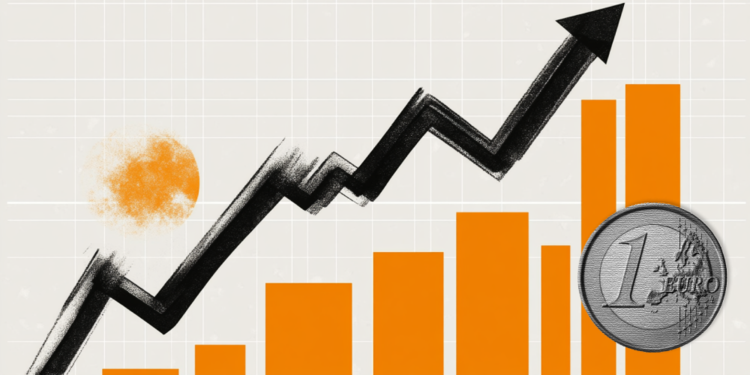- Gold prices soar towards $2,700, supported by strong market anticipation of a Fed rate cut this December.
- US small business optimism rises, but traders await crucial US CPI and PPI data later this week.
- Speculation about the Chinese central bank’s gold purchases and political changes in Syria also influence market dynamics.
Gold rose during the North American session on Tuesday with buyers targeting the $2,700 mark for the first time since November 25. One of the drivers of the increase in the price of the yellow metal is the expectation that the Federal Reserve (Fed) will cut rates at the December meeting. At the time of writing, XAU/USD is trading at $2,694, up 1.32%.
U.S. economic data released during the day hinted that small businesses had become optimistic about the economy, according to a survey from the National Federation of Independent Business. However, traders are focused on the release of US inflation figures on the consumer and producer sides on Wednesday and Thursday, respectively.
Investors seem convinced that the Fed will cut interest rates at its December 17-18 meeting. Data from the CME FedWatch tool hints that the futures market has priced in at 86% the chance that Fed Chair Jerome Powell and his team will cut the federal funds rate by 25 basis points (bps).
Additionally, XAU/USD prices soared on speculation that China’s central bank resumed purchases of the metal without yield. Meanwhile, geopolitics played a significant role after Bashar Al-Assad was overthrown in Syria.
This week, the US economic agenda will include the Consumer Price Index (CPI), the Producer Price Index (PPI) and initial unemployment benefit claims data.
Daily Market Summary: Gold Price Ignores High US Yields
- Gold prices advanced as US real yields rose two basis points to 1.956%.
- The 10-year US Treasury yield rose three basis points to 4.24%, a tailwind for the dollar.
- The US Dollar Index (DXY) rises 0.40% to 106.59 on Tuesday.
- US small businesses became optimistic about the economy. The NFIB index stood at 101.7, beating forecasts of 95.3 and 93.7 in October.
- Data from the Chicago Board of Trade, via the December federal funds rate futures contract, shows that investors are estimating a 19 bp easing by the Fed by the end of 2024.
Technical Outlook: Gold Price Resumes Uptrend, Targets $2,700
Gold’s uptrend resumed on Tuesday, extending its gains beyond the 50-day SMA at $2,685, as well as opening the door to challenge the $2,700 figure. The Relative Strength Index (RSI) remains bullish, hinting that buyers are gaining control.
Therefore, the first resistance for XAU/USD would be $2,700, followed by the all-time high of $2,790.
On the contrary, if the Bullion falls below the 50-day SMA, the next support would be the $2,650 figure. In case of further weakness, the next stop would be $2,600, followed by the confluence of an ascending support trend line and the 100-day SMA in the $2,580 to $2,590 area. This then precedes the daily low on November 14 and intermediate support at $2,536.
Gold FAQs
Gold has played a fundamental role in human history, as it has been widely used as a store of value and medium of exchange. Today, apart from its brilliance and use for jewelry, the precious metal is considered a safe haven asset, meaning it is considered a good investment in turbulent times. Gold is also considered a hedge against inflation and currency depreciation, since it does not depend on any specific issuer or government.
Central banks are the largest holders of Gold. In their aim to support their currencies in turbulent times, central banks tend to diversify their reserves and purchase Gold to improve the perception of strength of the economy and currency. High Gold reserves can be a source of confidence for the solvency of a country. Central banks added 1,136 tons of gold worth about $70 billion to their reserves in 2022, according to data from the World Gold Council. This is the largest annual purchase since records exist. Central banks in emerging economies such as China, India and Türkiye are rapidly increasing their gold reserves.
Gold has an inverse correlation with the US Dollar and US Treasuries, which are the main reserve and safe haven assets. When the Dollar depreciates, the price of Gold tends to rise, allowing investors and central banks to diversify their assets in turbulent times. Gold is also inversely correlated with risk assets. A rally in the stock market tends to weaken the price of Gold, while sell-offs in riskier markets tend to favor the precious metal.
The price of Gold can move due to a wide range of factors. Geopolitical instability or fear of a deep recession can cause the price of Gold to rise rapidly due to its status as a safe haven asset. As a non-yielding asset, the price of Gold tends to rise when interest rates fall, while rising money prices tend to weigh down the yellow metal. Still, most of the moves depend on how the US Dollar (USD) performs, as the asset is traded in dollars (XAU/USD). A strong Dollar tends to keep the price of Gold in check, while a weaker Dollar is likely to push up Gold prices.
Source: Fx Street
I am Joshua Winder, a senior-level journalist and editor at World Stock Market. I specialize in covering news related to the stock market and economic trends. With more than 8 years of experience in this field, I have become an expert in financial reporting.








